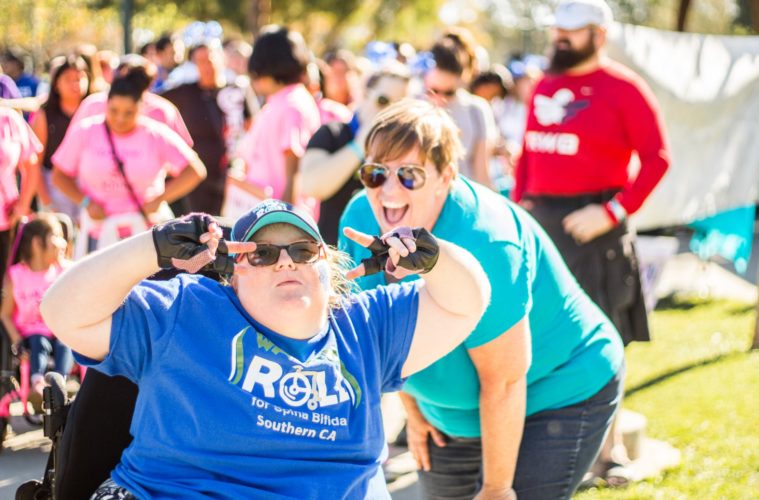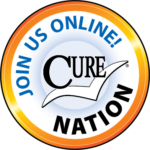 CURE NATION: According to the Spina Bifida Association, spina bifida is the most common permanently disabling birth defect in the United States. Spina bifida happens when a baby is in the womb and the spinal column does not close all of the way. Every day, eight babies are born in the United States with spina bifida or a similar birth defect of the brain and spine.
CURE NATION: According to the Spina Bifida Association, spina bifida is the most common permanently disabling birth defect in the United States. Spina bifida happens when a baby is in the womb and the spinal column does not close all of the way. Every day, eight babies are born in the United States with spina bifida or a similar birth defect of the brain and spine.
Los Angeles native Patti Jasinski understands spina bifida firsthand, as she is the mother and caregiver for her daughter, Mary, who was born with significant medical needs. Below, Cure Advocate Julienne Dallara talks with Patti to help provide advice, guidance and hope for spina bifida families and caregivers.
Patti jasinski recalls her pregnancy

Based in California, Patti Jasinski is a Spina Bifida caregiver and advocate.
Interviewing Patti on a Monday afternoon, I feel as though I’ve had a double shot of expresso and a pep talk by Tony Robbins. Patti, simply, is inspirational. As a woman in a wheelchair, I’ve had that word assigned to me, mostly unjustifiably. For Patti, it is accurate. She will inspire you to use all your information and experience to help others in our community too!
When Patti was 18 weeks pregnant with her second child, an ultrasound showed that her baby would be born with spina bifida.
“I was fortunate to have a supportive family,” Patti remembers appreciatively. “I also went to a high-risk obstetrician and connected with a neurosurgeon in Long Beach. I wanted to be ready, to find out what was ahead.”
“I kept asking myself, ‘how do I get through this?’ Immediately, I focused on helping other families get through it,” she says.
“When you are a young family, you don’t know that all these resources are out there until you connect with an organization that will tell you about available programs for help and support. I asked, ‘what do I need to get her home?’ Other families told me ‘You just have to dive right in!’”
Patti dove. With only 15 months separating one daughter from the other, she had two babies in diapers, and one had special needs. Patti was told that the first years would be tough and intense, but it would get better as Mary got older.

The Jasinski Family
Connecting with Families Who Understand
Patti recalls, in a voice that is brisk but emotional, “The first 3-4 years with Mary, we had a lot of doctor appointments, procedures, and surgeries. The Spina Bifida Association gave us a lot of necessary information. While in a program for infants, we met other special needs families who turned out to be life-long friends. The kids’ diagnoses weren’t the same, but what we were all going though was the same.”
The next big boost was when the social worker connected them with Regional Center, a California organization offering programs supporting children with developmental disorders. Regional Centers are all-inclusive from the ages of 0-3. If the child doesn’t show signs of intellectual involvement by age three, they are sent to other programs. California Regional Center’s criteria are as follows:
California Regional Center’s criteria are as follows:
- Infants and toddlers with a developmental delay in one or more of the following five areas: cognitive development; physical and motor development, including vision and hearing; communication development; social or emotional development; or adaptive development.
- In addition, individuals at risk of having a child with a developmental disability may be eligible for genetic diagnosis, counseling and other prevention services.
Therapy and durable medical equipment goes through CCS (California Children’s Services), usually by a referral from Regional Center. Some Regional Centers also offer respite care for parents or primary caregivers, so that they can get a break to renew their own energy.
PATTI STRIVES FOR the power of advocacy
Patti is an advocate for Mary in terms of speaking up for healthcare access overall, and she doesn’t stay at home to do it.
“I was on Capitol Hill last year at a Spina Bifida legislative event, mostly talking about wheelchairs. We must educate our lawmakers! They don’t know that you can’t call a footplate an accessory because the wheelchair won’t work without it. Unless we inform them, we will have to live with the rules they make because they don’t know any better,” she explains.
Yet, Patti remains hopeful for progress and positive change. “The general public is becoming more aware. Here in Southern California, we have a more accepting awareness of people’s differences. But how can we use that to make more of an impact on our communities,” she asks.
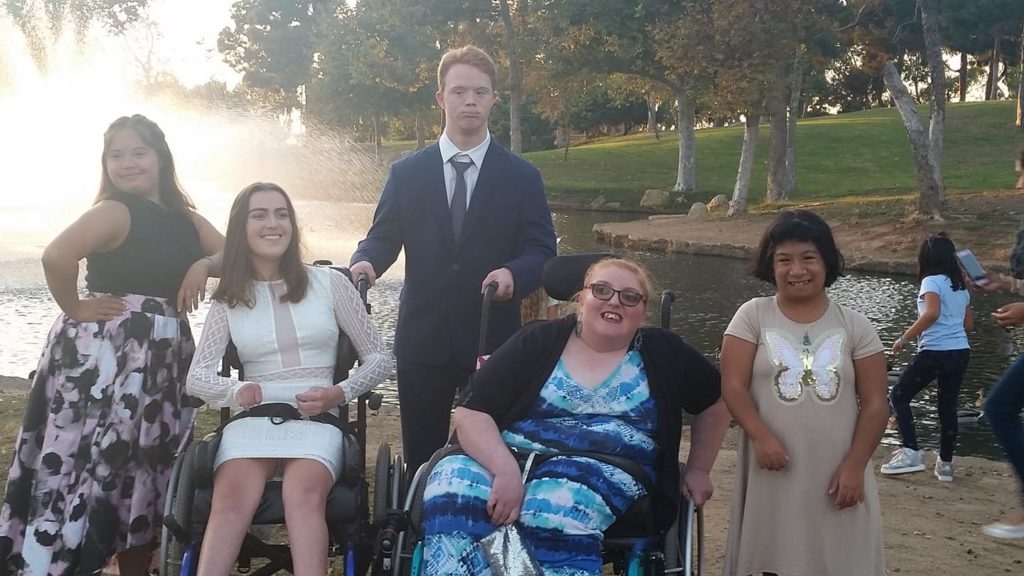
Mary Jasinski attended homecoming at her school along with friends from her classes.
After a deep breath, Patti answers her own question with this advice for other advocates:
“Make incremental steps in the beginning. When you can see you are making progress, you feel you can go on.”
“Even though I have great motivation and a lot of energy, I have to work smarter. I ask myself how can we start partnering with other organizations? A high percentage of people with Spina Bifida also have hydrocephalus. Why aren’t we partnering with the Hydrocephalus Association? Lots of people don’t think to donate to the Spina Bifida Association. They do not understand how much the SBAA does for our community. Our message as a community and as a support organization needs to be clearer,” she explains.
“UCP (United Cerebral Palsy) is a great organization too. You don’t have to have cerebral palsy to go to their classes or use their resources. If only we could combine these great organizations, so we aren’t all working separately on the same things,” Patti adds.
PATTI CHEERS WHILE MARY CHEERS in school
Mary, now 17 years old, cheers for her high school on a team of four girls in special education classes at her school.

Mary is a cheerleader for her high school.
When the lift on the Jasinski’s van broke, the other parents from the cheerleading team helped, lifting Mary in and out, even following them home to help. This kind of mainstreaming in schools helps to normalize impressions of kids with in special education, but Patti still sees problems in the school system and in the community.
“I’ve learned that there is a high rate of abortion when parents find out their baby will be born with spina bifida. My message to women of child-bearing years is prepare your body for it to the best of your ability. Even though there is no evidence that spina bifida is caused by anything the mother may have done, often SB moms still blame themselves.”
Patti adds, “But as a mom, I am a tiger when it comes to my child! My husband refers to himself an ant because he says, ‘I will carry 1000 times my weight to take care of my daughter.’
Recognizing how passionate Patti is about Mary’s self care, I asked about health concerns. What’s the biggest concern she has with Mary’s health?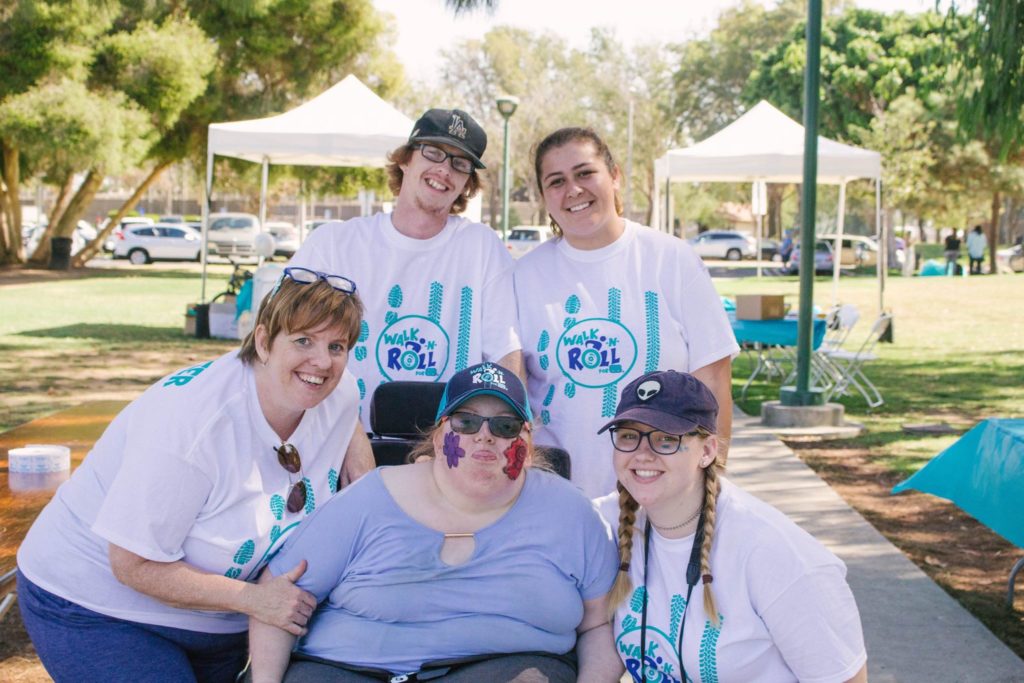
patti and mary choose Cure catheters
“My day is set around Mary’s cathing schedule. One of our family’s goals is to keep her bladder healthy. It’s a big thing, not just with spina bifida but with so many similar disabilities and spinal cord injuries.”
“We use Cure catheters and we love them. Mary uses a Foley at night and a Cure Medical catheter during the day.”
“When I buy something, I look at what that company does with their money. I don’t think enough people know that Cure Medical gives 10% back to medical research for a cure for paralysis. I think if more people knew, they would shop with their conscience. Besides that, Cure Medical participates in our community. They are at all the Abilities Expos.”
“That’s what the Abilities Expo is for, so you can get samples and see what works best for you. I think the Expo is one of the greatest resources that a family can take themselves to. Every spina bifida clinic and other care providers should have the Abilities Expo schedule posted so people can plan to go,” Patti continues.

 To request free samples of the Cure Twist® Ready-to-Use Catheter for Women or any Cure Medical catheter, contact your local distributor of quality healthcare products, or click here.
To request free samples of the Cure Twist® Ready-to-Use Catheter for Women or any Cure Medical catheter, contact your local distributor of quality healthcare products, or click here.
“I know girls in their 20’s whose parents don’t know what a closed system is. Without Cure educating them about available options, they would just keep ordering the same products they are used to. There are many new products and resources that the Spina Bifida community needs to be educated on,” she adds.
Patti hopes for more accessible healthcare
Patti has a million ideas on improving life for people with disabilities, and she knows that the clock is ticking on getting her ideas manifested. “My next research project is to find gyno, uro, eye doc and kidney doc who can help transfer an adult patient onto the exam table,“ she says.
You’ll find Patti back on Capitol Hill in the near future, educating lawmakers about the need for accessible doctors’ offices. Because she’s a tiger when it comes to her daughter, just like the rest of the Spina Bifida community!
If you’d like to get involved to also advocate on behalf of Spina Bifida families nationwide, connect with Patti through her local SBA chapter here.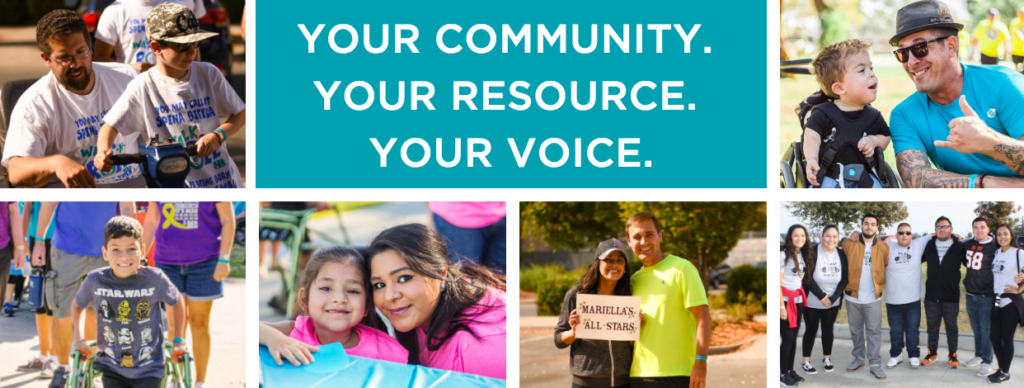
Founded by a quadriplegic, Cure Medical is the only catheter manufacturer in the world that donates10% of net income to support research programs in pursuit of a cure for urinary retention, paralysis, spinal cord injury and central nervous system disorders.
Enjoy Our Free Resources & Articles
CURE NATION is designed with you in mind, to offer assistance and education when you need it through a personal support program.
All of the information you find below and on our related social media pages is meant to guide you to places, topics and resources that enhance your life, while also connecting you with a growing group of friends.
View our lifestyle resources by condition type:
Multiple Sclerosis, Pelvic Organ Prolapse, Prostate Cancer, Spina Bifida, Spinal Cord Injury and Transverse Myelitis
- Sign up for our free, CURE NATION e-newsletter to have our latest stories delivered directly to you, once a month.
- Get our FREE LIFESTYLE + ACCESSIBLE TRAVEL BOOKS here.
- Meet us in person at a CURE NATION event.
- Have an idea you’d like to share? Let us know.
- Be sure to take minute to meet our Cure Advocates too.
Try the Pediatric Hydrophilic Cure Catheter®
Contact us to request your free backpack with educational materials to help your child learn the steps for self-cathing.
You may also enjoy:

